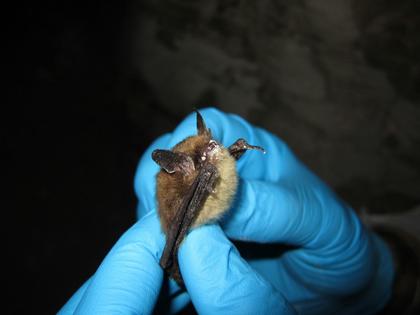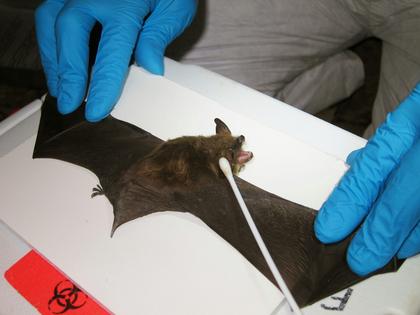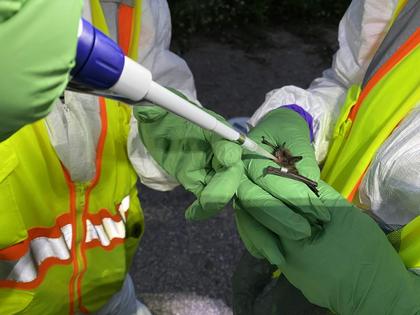Bats in Colorado face fight against deadly fungus that causes white-nose syndrome
Published in News & Features
Bat populations in Colorado may be headed for a decline that could cause ecological disruptions across the state.
Two bats discovered in Boulder County in late February 2024 were confirmed to have white-nose syndrome, a deadly fungal disease. Additional bats in Larimer County also tested positive for white-nose syndrome early this spring.
The first North American bats with white fungus on their faces, ears and wings were discovered in 2006 in caves where they hibernated near Albany, New York. The fungus causes bats to lose nutrients and moisture through their skin and to wake early from hibernation in search of food and water.
The disease spread west quickly, reaching Washington state in 2015 and California four years later. It was confirmed in Montana and New Mexico by 2021. Evidence of the fungus was first reported in Colorado in the summer of 2022.
I’m a bat biologist, and most of my research has focused on the genetics of Myotis bats. Knowing which bat populations are genetically unique and where they’re found will help researchers understand how white-nose syndrome will affect them and how it moves among geographic areas.
White-nose syndrome is the result of infection by a fungus, Pseudogymnoascus destructans.
Most fungi thrive in warm, moist conditions, but Pseudogymnoascus destructans is a “cold-loving” fungus. This trait makes it well adapted to grow on bats when their body temperatures are lowered during hibernation and their immune systems are suppressed.
Bats infected with Pseudogymnoascus destructans lose nutrients and fat reserves critical to surviving winter hibernation as the fungus grows into their skin. One of the earliest signs of white-nose syndrome is when bats awake early from hibernation in search of food. The fungus also affects other metabolic factors, such as electrolyte levels.
After the discovery of Pseudogymnoascus destructans in North America, scientists searched for the fungus around the globe and found it in European and Asian caves, where they believe it is native. Bats in those areas don’t seem to be negatively affected by the fungus, likely because they co-evolved with the fungus and developed some immunity.
Pseudogymnoascus destructans was probably brought to the U.S. by travelers who explored caves in Europe and returned with contaminated equipment.
...continued













Comments